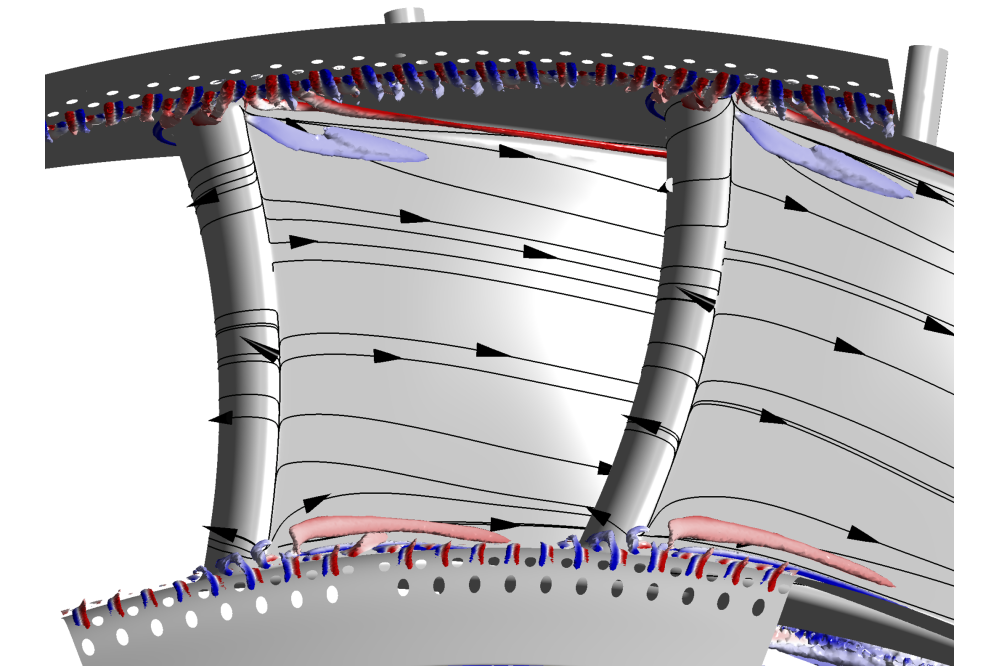Flexible HP-Turbines
Introduction
The fluid temperatures in the high-pressure turbine of a commercial jet engine or industrial gas turbine by far exceed the melting point of the materials used. This severely limits the ability to obtain experimental data from testing. As a result, the design process of modern high-pressure turbines, which relies heavily on the numerical prediction capabilities of 3D CFD simulations, is also burdened with high numerical uncertainties. The main objective of the Flexible HP-Turbines project is the identification of numerical uncertainties and the investigation of aerothermal interaction mechanisms both within the outer annulus region of the Large Scale Turbine Rig. Therefore, two casing side cooling treatments – one upstream and one downstream of the first vane row – need to be designed using 3D CFD simulations, which are then built, tested, and compared with the numerical results.
Methods
The commercial CFD code Ansys CFX is used for all CFD simulations. Within CFX, the three-dimensional, coupled, pressure-based flow solver is used to solve the steady and unsteady compressible Reynolds-Averaged Navier-Stokes equations. The solver is based on the finite volume method and uses a high-resolution (quasi-2nd order) spatial discretization scheme. The closure problem of the Reynolds-Averaged Navier-Stokes equations is treated by Menter’s SST model, which combines the advantages of the k-ϵ model in free streams and the k-ω model near walls and additionally considers the effect of the transport of the turbulent shear stress. The interface between rotating and stationary components is treated by using a mixing plane or by performing transient simulations.
Results
To identify numerical uncertainties in the outer annulus of a high-pressure turbine, two casing side cooling treatments – one upstream and one downstream of the first vane row – were designed for the Large Scale Turbine Rig using steady-state Reynolds-Averaged Navier-Stokes approaches. During the design process, several iteration loops were required to find the optimal design that was both representative of the industrial application in a jet engine or gas turbine and could also be implemented in the test rig. First numerical investigations of the upstream cooling treatment show a modification of the secondary flow phenomena within the stator passage, thus affecting the stator turning and therefore the incidence on the following rotor.
Discussion
While the aerodynamic impact of the upstream cooling ejection on the downstream rotor tip flow field appears to be comparably small, this region is also known to be prone to high numerical uncertainties. For future research, the consideration of unsteady effects as well as more advanced turbulence modelling approaches might therefore be helpful to gain more knowledge about the aerothermal interaction mechanisms at the rotor tip flow field.





